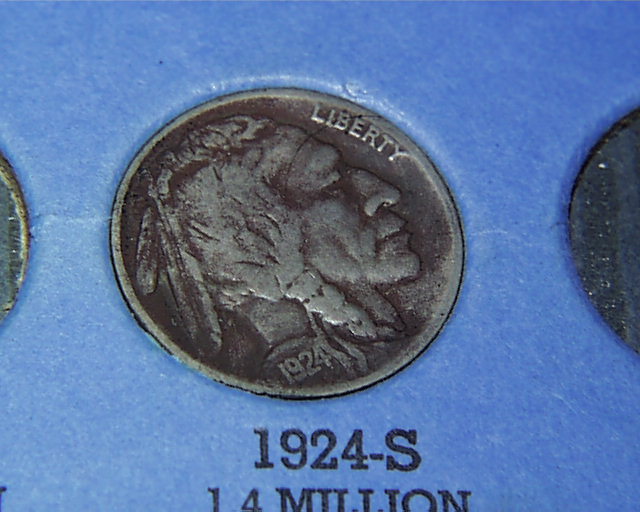
The U.S. "Buffalo" Nickel was minted between 1913 and 1938. The date was placed on a raised area beneath the image of a native American; the date was usually the first thing to disappear as a Buffalo nickel wore down in people's pockets, purses and being handled in transactions. During the 1950s I found the dates on most circulating buffalo nickels already to be worn beyond recognition. Those minted in the 30s often had readable dates, but those minted between 1913 and 1929 were practically always unreadable. Occasionally I was delighted to find one like that at the right where natural corrosion or some coating process gave a good contrast to a still-existing date.
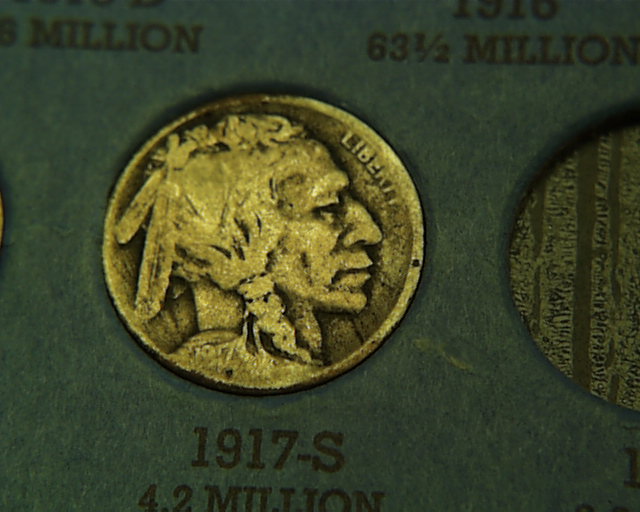
There were those rare finds of a nickel with a reasonably good date on a bright coin, like that one at the left. A buffalo nickel can be etched with vinegar so as to "develop" a latent image of the date of mint, owing presumably to the variable "etchability" of regions which had experienced high or low die pressures during the minting process.
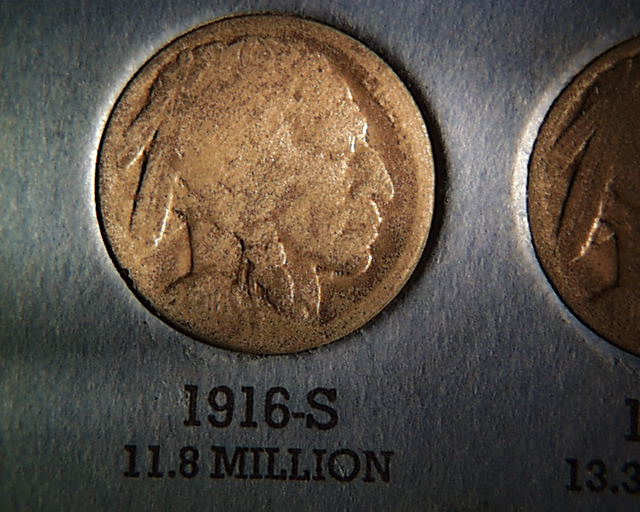
If a buffalo nickel is dropped into about 10 mL vinegar, date side up, and left for anywhere from one to eight weeks (frequent inspections are advised), a readable date develops in about a third of the cases tried. Here are three from my old coin collection. Most often one obtains marginal results, like the 1916 coin on the right.
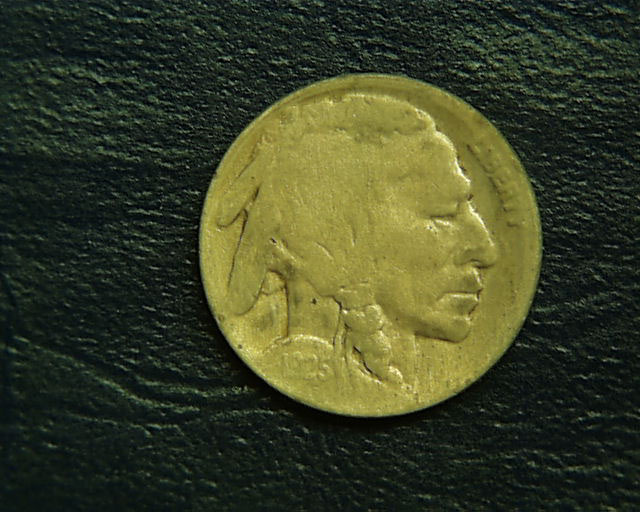
Occasionally one gets a clearly identifiable date, as in the case of the 1925 coin at the left.
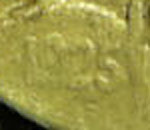
Here's an enlargement of the date from the coin above.
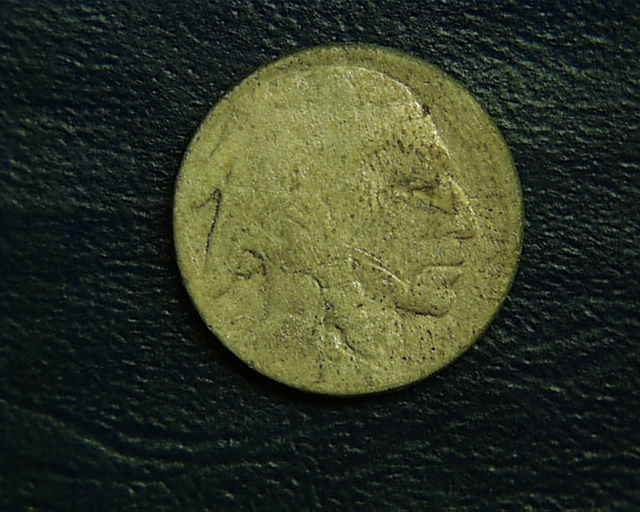
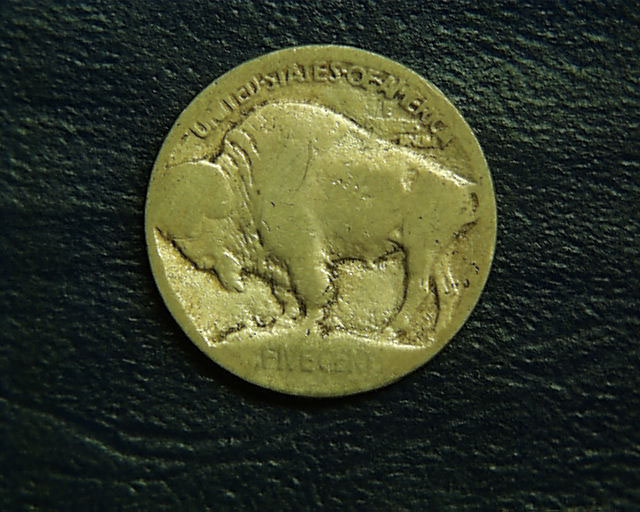 For some percentage of trials, less than 50% but frustratingly close to it, one gets a result which
can
be described only as wishful thinking, such as the 1913 coin at the right. However, 1913 nickels
were the only minting in which there was "raised ground" under the buffalo. Notice that the
"FIVE CENTS" partially emerged, but there was no mint mark under it, so I entered it as a 1913
Philadelphia, even though the date can't be seen.
For some percentage of trials, less than 50% but frustratingly close to it, one gets a result which
can
be described only as wishful thinking, such as the 1913 coin at the right. However, 1913 nickels
were the only minting in which there was "raised ground" under the buffalo. Notice that the
"FIVE CENTS" partially emerged, but there was no mint mark under it, so I entered it as a 1913
Philadelphia, even though the date can't be seen.During a recent discussion on the Internet list of chemical educators, CHEMED-L, someone brought up the topic of etching buffalo nickels to produce latent images of the dates of mint. Local coin stores have large collections of unreadable buffalo nickels because some craftspeople make bracelets and necklaces from them. For 30 cents I bought three unreadable buffalo nickels in December, 1999, and dropped each one into 10 mL standard vinegar, 5% acetic acid.
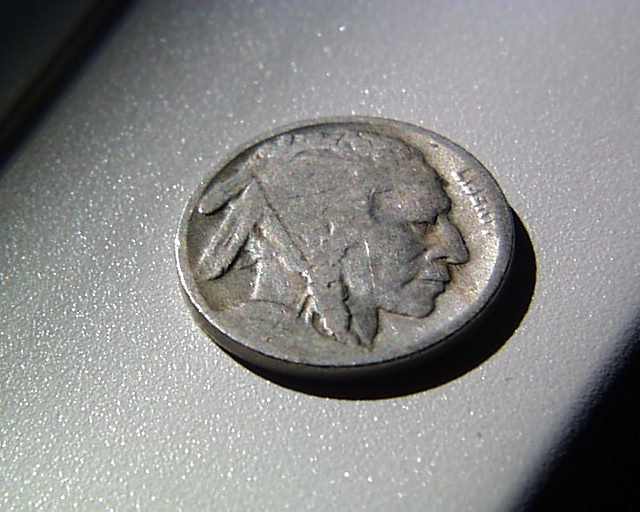
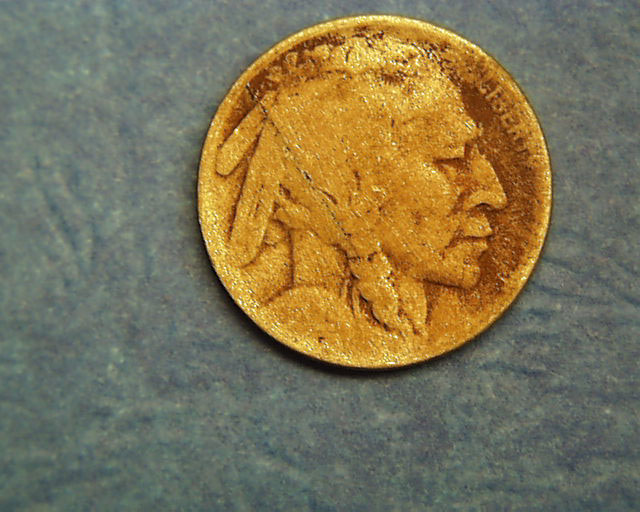
Here are some "before" (on the left) and "after" (on the right) pictures following an etching period of about eight weeks. The first pair offer the standard marginal success story. Is that a "9" or a "5" as the last digit? Is it 1919 or 1929?
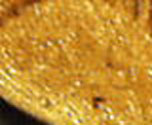
Here's an enlargement to emphasize the 5/9 uncertainty on the last digit and to suggest that it is probably 1925 or 1929 rather than 1915 or 1919 because of the suggested space between the 2nd and fourth digits. For my money (!) I'd say that I can actually see the date 1929. For those old enough to remember it, these pictures are a little reminiscent of the movie "Blowup," aren't they?
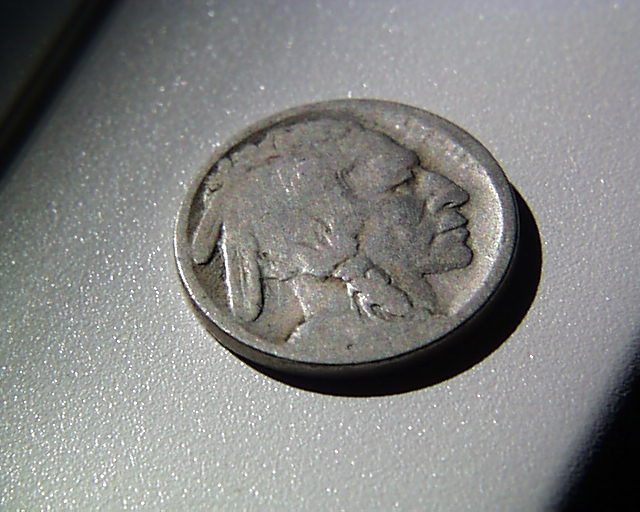
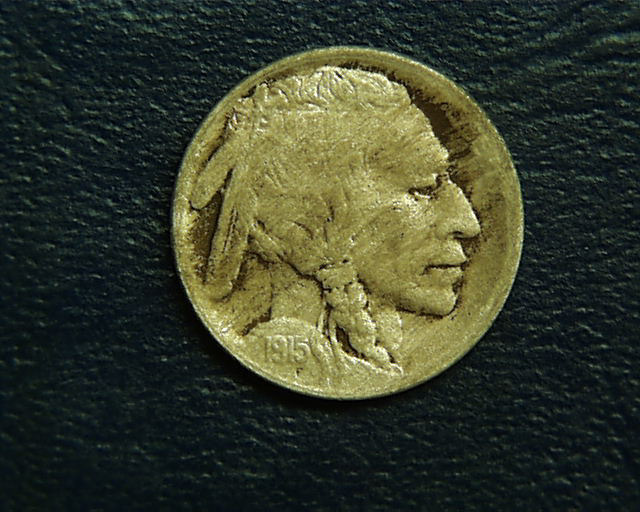 The second case is a stunning success. After deciding that I really COULD read the date, I
handed this nickel to my wife who is near-sighted and asked her to tell me the
date. She removed her glasses, took one look at it and without a pause said, "Oh, that's 1915."
Voila!
The second case is a stunning success. After deciding that I really COULD read the date, I
handed this nickel to my wife who is near-sighted and asked her to tell me the
date. She removed her glasses, took one look at it and without a pause said, "Oh, that's 1915."
Voila!
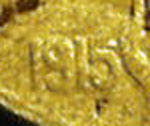 The image above and to the right appears marginal because the resolution of most screens is less
than the image itself. The enlargement to the right shows the date much better.
The image above and to the right appears marginal because the resolution of most screens is less
than the image itself. The enlargement to the right shows the date much better.
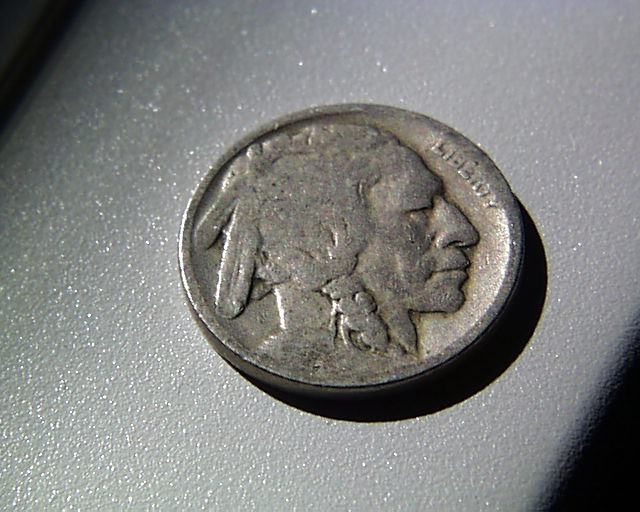
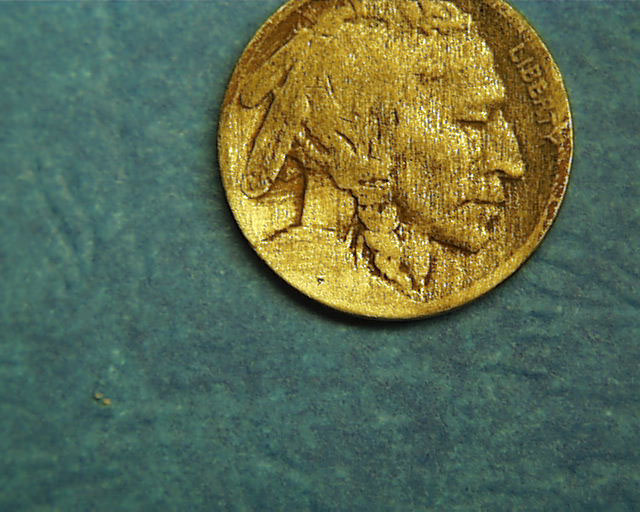
Finally the third case gives us another example of wishful thinking. Can you even begin to see the first two digits of the date, which you already know to be 19?
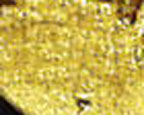
Here's an enlargement better to illustrate the problem.
Send a message to Oliver? Click here.